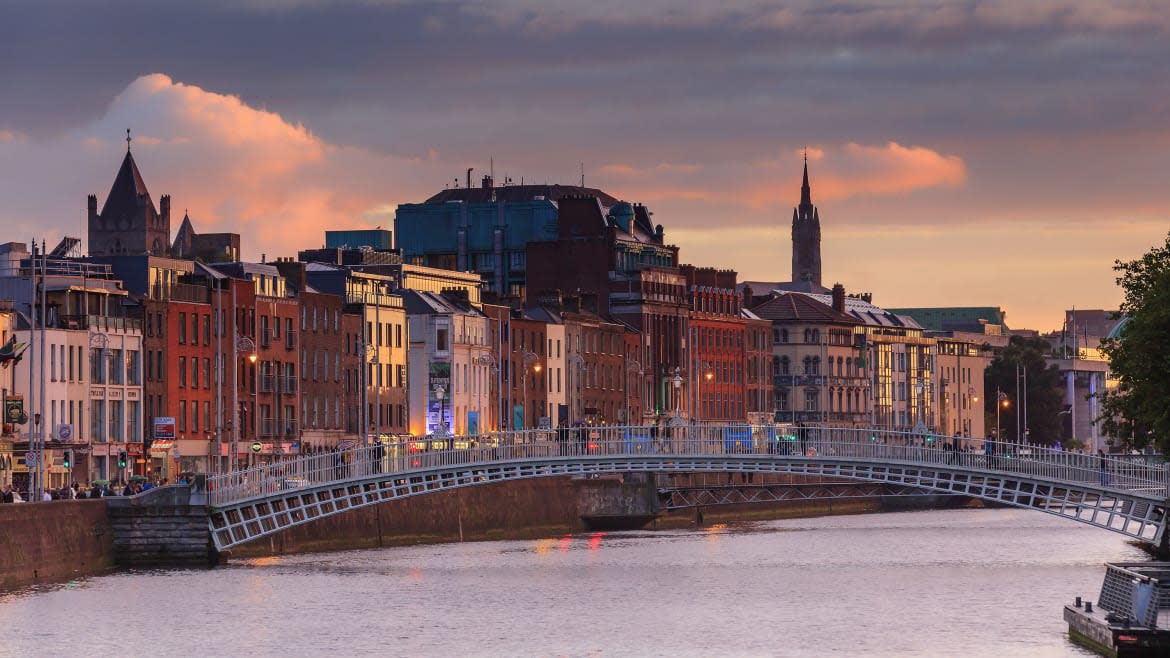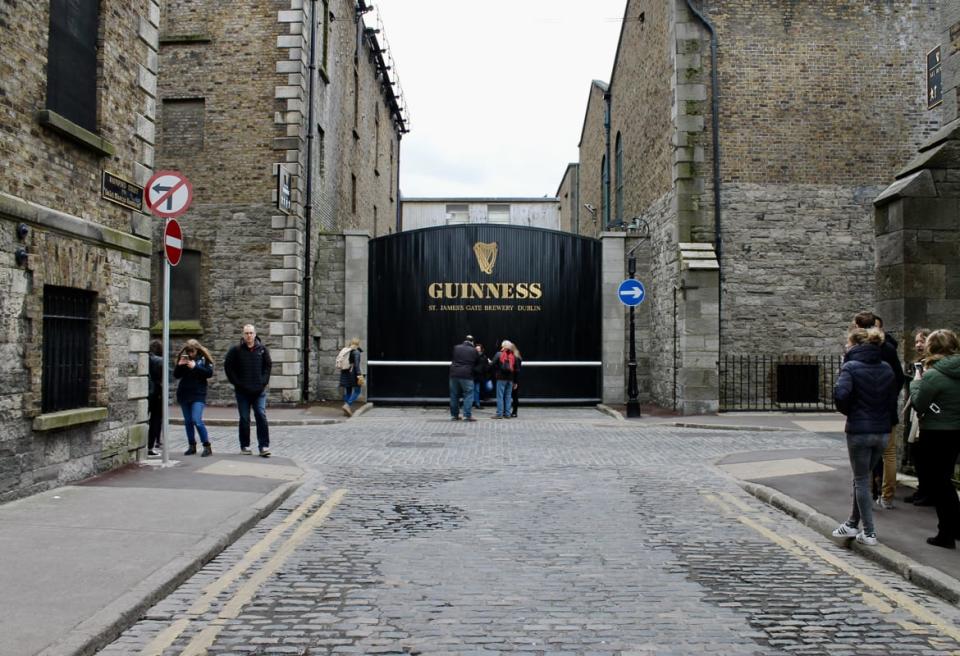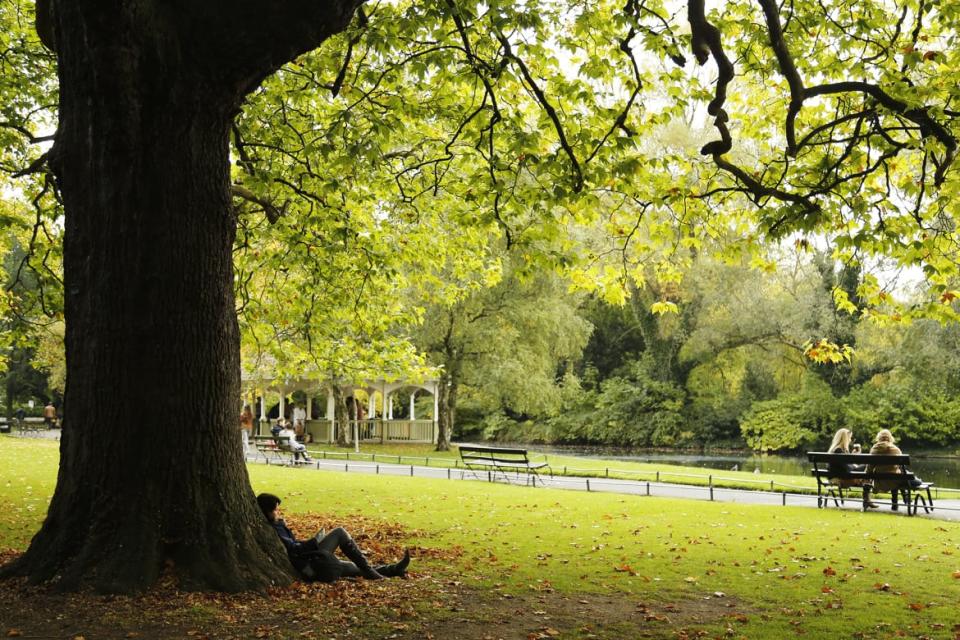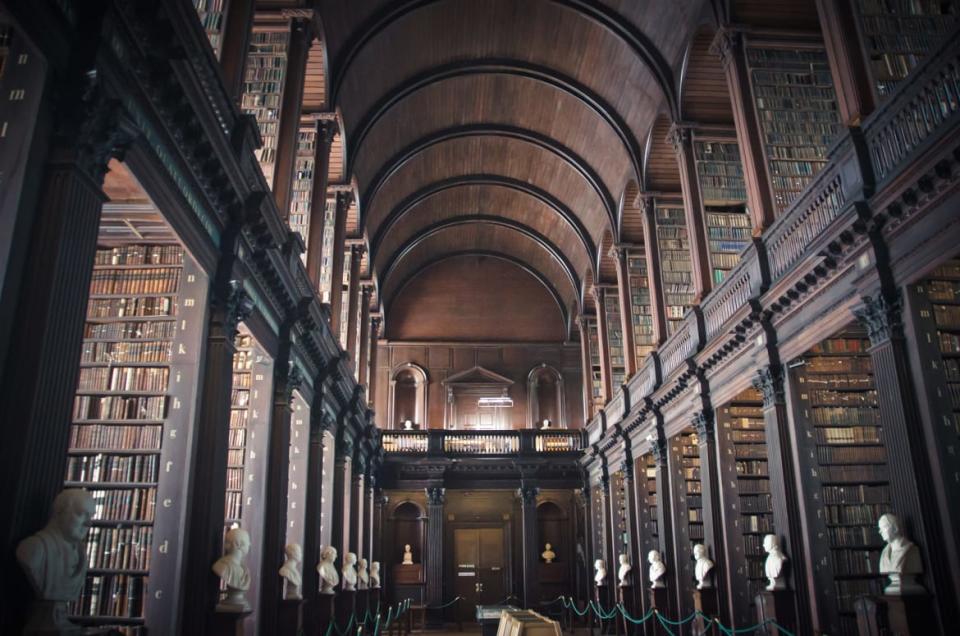Is Dublin the World’s Most Walkable City?

- Oops!Something went wrong.Please try again later.
For exactly a century, Dublin has been probably the most famously walkable city in the world, from a literary perspective anyway. In 1922, James Joyce published Ulysses, his masterpiece of modernism, his total overhaul of the novel form, the Most Unread Great Book of All Time, etc. But when stripped to its essence, the novel boils down to the story of a man, Leopold Bloom, an advertising agent, who on June 16 walks the streets of Dublin from morning until well into the night.
Joyce fans still follow Bloom’s odyssey, from 7 Eccles Street all across the city and finally back home again. You can follow the route with no trouble because while a sizable flock of those enormous construction cranes now dominate modern Dublin’s skyline, the heart of the old city, the city as it existed in 1904, when Ulysses is set, century ago, is still visible and quite vivid.
You can take one of the guided walking tours built around Ulysses, or just walk parts of Bloom’s path yourself (what I did). The novel itself is a kind of guidebook: Joyce boasted that he put so much detail about the city into his novel that if the city were destroyed, it could be rebuilt using the book as a blueprint. His fans are his confederates in this regard: when Bloom’s Eccles Street rowhouse was razed in the ’60s, the front door, complete with knocker, was preserved and now resides at the James Joyce Centre.
Joyce has spawned a thriving cottage industry in the city he strove to make immortal. Every bookstore sells Ulysses, and sometimes even newsstands sell it too. There are several Joyce-related tours around the city, and Joyce’s face turns up in murals around town, and when the Irish had their own money, they put Joyce—along with W.B. Yeats and Jonathan Swift—on the paper notes. There is also, of course, the requisite public statue, locally nicknamed “the prick with the stick.” It’s a pleasant surprise for an American traveler to land in a country where authors are respected, even if not revered, and not necessarily read. But that’s fine. I’ll happily take a country that even merely honors its great writers.
In the Simpsons episode where they go on vacation in Ireland, Lisa notices that it’s June 16 and says, “Oh, it must be Bloomsday. Every June 16, lovers of James Joyce follow the route traveled by Leopold Bloom in the novel Ulysses.”
To which Bart replies, “What you’re saying is, we’ve run out of fun things to do.”
That’s a little harsh (but funny—Joyce would probably have thought so too, being one of our funnier great writers: when a fan approached him and asked to kiss the hand that wrote Ulysses, Joyce demurred, saying, “It’s done a lot of other things too.”)
But a lot of people besides Bart Simpson come to Dublin looking for something out of the literary line. And that’s OK, because even stripped of its considerable literary lineage, Dublin does not disappoint. The person who once described Ireland generally and Dublin in particular as a theme park without rides was onto something.
Walkable Dublin, in other words, is not strictly Joycean turf. There are also the usual history tours, pub tours (oh are there pub tours), and even a tour that takes you around town in a converted city bus in which you are served tea while you see the sights.
There are also beaucoup food tours. I joined Food on Foot on an April morning that in the space of three hours saw sunshine, rain, and hail not once but twice. The tour was devoted to street food, or more precisely, take away. Among other offerings, our crowd sampled luxurious cheese sandwiches; fish and chips from Leo Burdock’s, which bills itself as the city’s very first chip shop (est. 1913); and probably the best ice cream cone I’ve ever eaten, courtesy of Murphy’s, a small chain with about half a dozen outlets across the country. They let you sample all you want before making a final selection, but that just makes it harder to choose. Start with the Dingle Sea Salt, Irish Brown Bread, or Chocolate Whiskey (yes, those are flavors) and work your way out from there.
There was also a stop at a decent pizza joint, which might be a helpful place to know about when you need to soak up some alcohol at the end of a long night, but while I don’t speak for all tourists, I’ll wager that Americans at least don’t want to go abroad and eat food they usually eat at home. (Or maybe they do. Fifty years ago there was a restaurant on Grafton Street touting American food on the cheeseburger-milkshake end of the spectrum. It’s still going strong.)
Food on Foot’s website advises you to show up hungry, and they’re not kidding. You’ll cover a lot of ground on this tour and burn some serious calories, but you also start eating around 11 a.m., and after that you’re noshing pretty steadily for the next two to three hours. An empty stomach helps.
Kevin Adams, your guide, likes to talk while you eat, and he’s a knowledgeable native with a knack for narrative and a palpable affection for the city he’s describing to you. But stand close when he’s talking. It’s not always easy hearing over the sounds of the city.

The Guinness Brewery is located at St. Jame's Gate Brewery in Dublin, Ireland.
The tour starts in the neighborhood called the Liberties, where the Guinness Brewery is located, and works its way toward the center of the city. It’s an old and slightly bedraggled part of town, though not without the malignant fairy’s kiss of gentrification here and there. The Liberties dates back to the arrival of the Normans in the 12th century, and the name derives from ancient jurisdictional fights over who controlled whom. The neighborhood now is a thick mix of schools, markets, residential areas, some industry (breweries mostly), and lots of small businesses, but the history keeps breaking through. At one point a partial but sturdy stone wall taller than a man—a fragment of the old city fortification—juts out into the street, a reminder to pedestrians that they’re walking on history at every turn. It’s a literally layered thing, this Dublin landscape.
Walkability in a city cannot be quantified or codified. But there are certain basic expectations. There should be green spaces to break up the blocks of buildings, and here Dublin shines, with a generous supply of parks both large (Phoenix Park, St. Stephens’ Green) and small (Dublin may not have invented the pocket park, but it has embraced them ardently). Ideally there’s water (the Liffey, with its varied chain of foot bridges, runs right through the center of the city, which fronts on Dublin Bay and the Irish Sea).

St Stephen's Green in the city center
Best of all, the city doesn’t tower over you at every turn. Those construction cranes mentioned earlier do not bode well for what is still a modestly becoming skyline, but so far there’s still plenty of light. Dublin is a three- and four- and five-story city, open to the sky and though filled with knotty lanes and byways, not the least claustrophobic.
Because it’s not a huge city, it has all the virtues of proximity, i.e., you can check out a lot without walking your legs off. Trinity College, with the Book of Kells to lure you in and the ancient library’s great hall to keep you there in a state of wonder, sits around the corner from the first rate National Gallery of Ireland, which is just around another corner from the National Museum of Ireland (natural and cultural history, archeology), which in turn is only a block or two away from Grafton Street, and the main shopping drag.
Lately Dublin has also been hit by the trend of boutique museums. There are at least two on St. Stephen’s Green alone: the Little Museum of Dublin and the just opened Museum of Literature Ireland, both small enough to fit within the confines of a couple or three old Georgian row houses. I only had time enough to check out the literary museum, a beautiful, intimate space, which in April showcased a lovely deep dive on the Joyce family. But if I get back there, I definitely plan to hit the National Leprechun Museum.

"Wisdom in old shelves and books"
As for food and drink, you can’t get more proximate than central Dublin. There are of course pubs of all ages on nearly every block, and lately the city has gone coffee crazy. As for food, all the old jokes about Irish cooking are just that, old jokes that stopped being funny a couple of decades ago. I had the good fortune to finish up a long day of walking and looking and poking around by dining at The Pig’s Ear, and there had one of the best meals of my life. The restaurant’s website promises “good, honest, Irish fare with a modern touch,” and I don’t know what was in that modern touch, but my baked cod with a hazelnut crust was something magical.
The day had been long, but leaving the restaurant, I found myself looking forward to the slow stroll back to the hotel. The streets had been nearly empty in the morning (bank holiday), and they were empty again now at twilight. Traffic was light, and you could still hear birds singing somewhere in the dark of St. Stephen’s Green. It is a rare pleasure, I thought, feeling at home in a strange city. And so to bed.
Get the Daily Beast's biggest scoops and scandals delivered right to your inbox. Sign up now.
Stay informed and gain unlimited access to the Daily Beast's unmatched reporting. Subscribe now.

